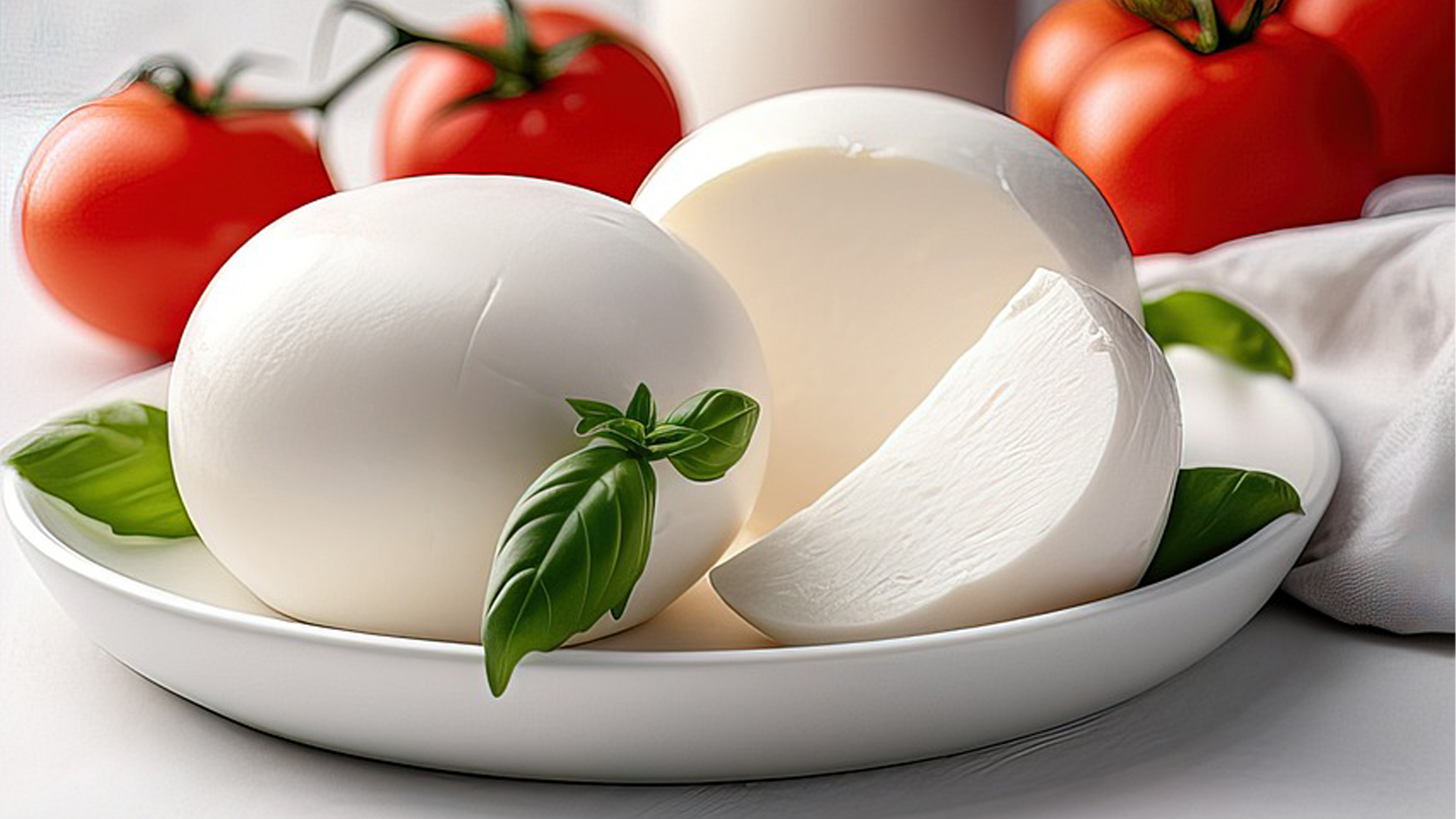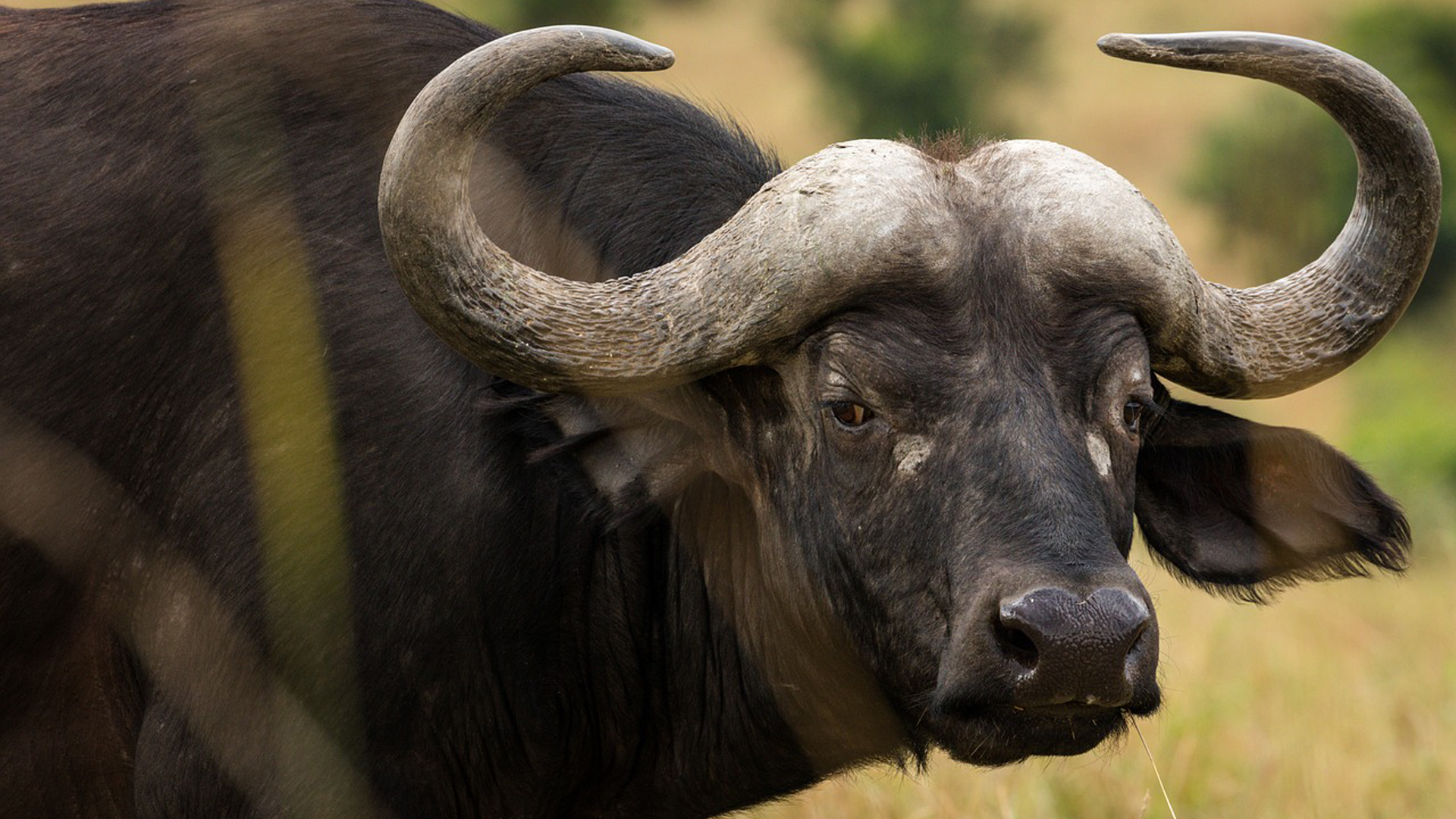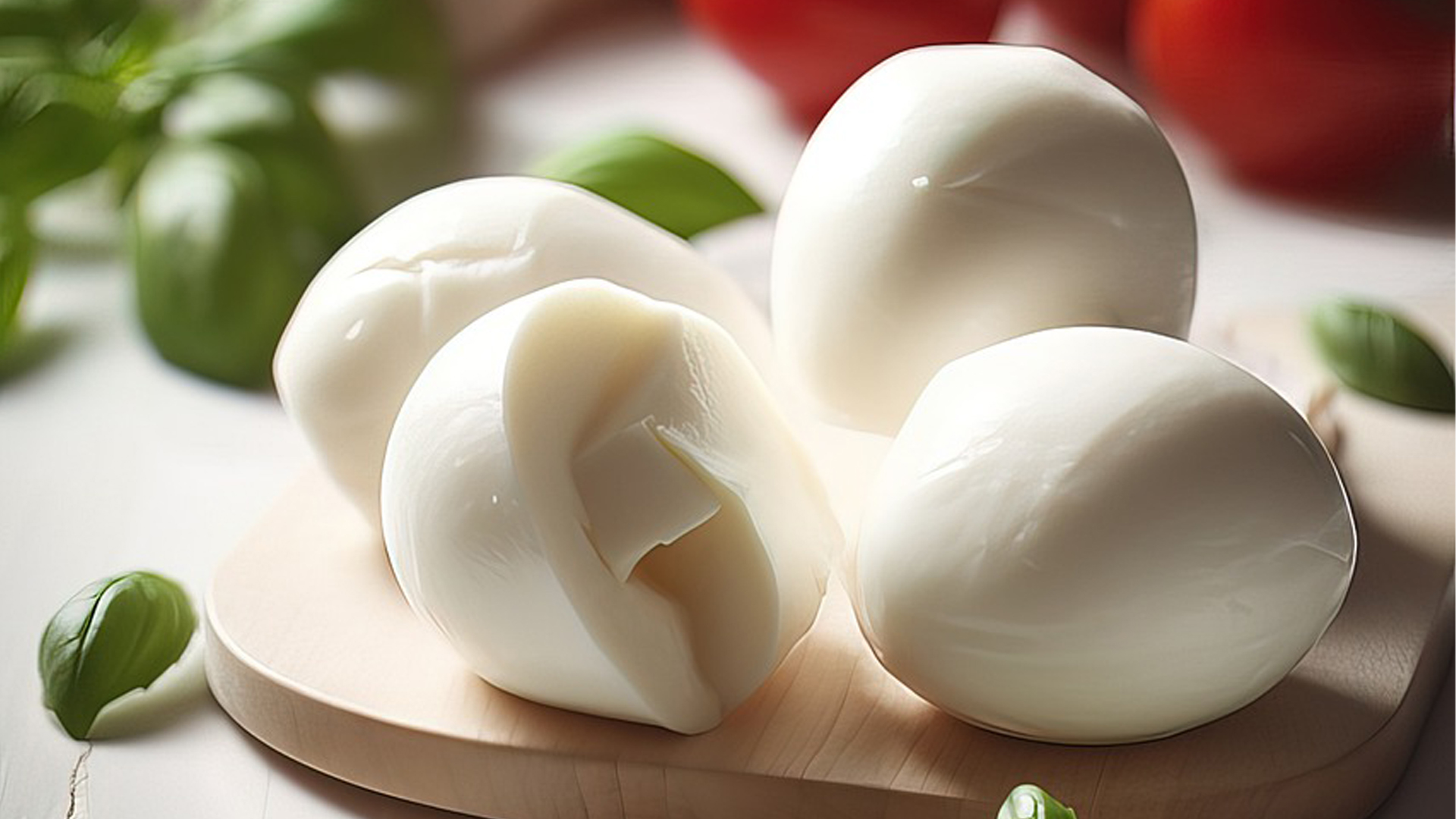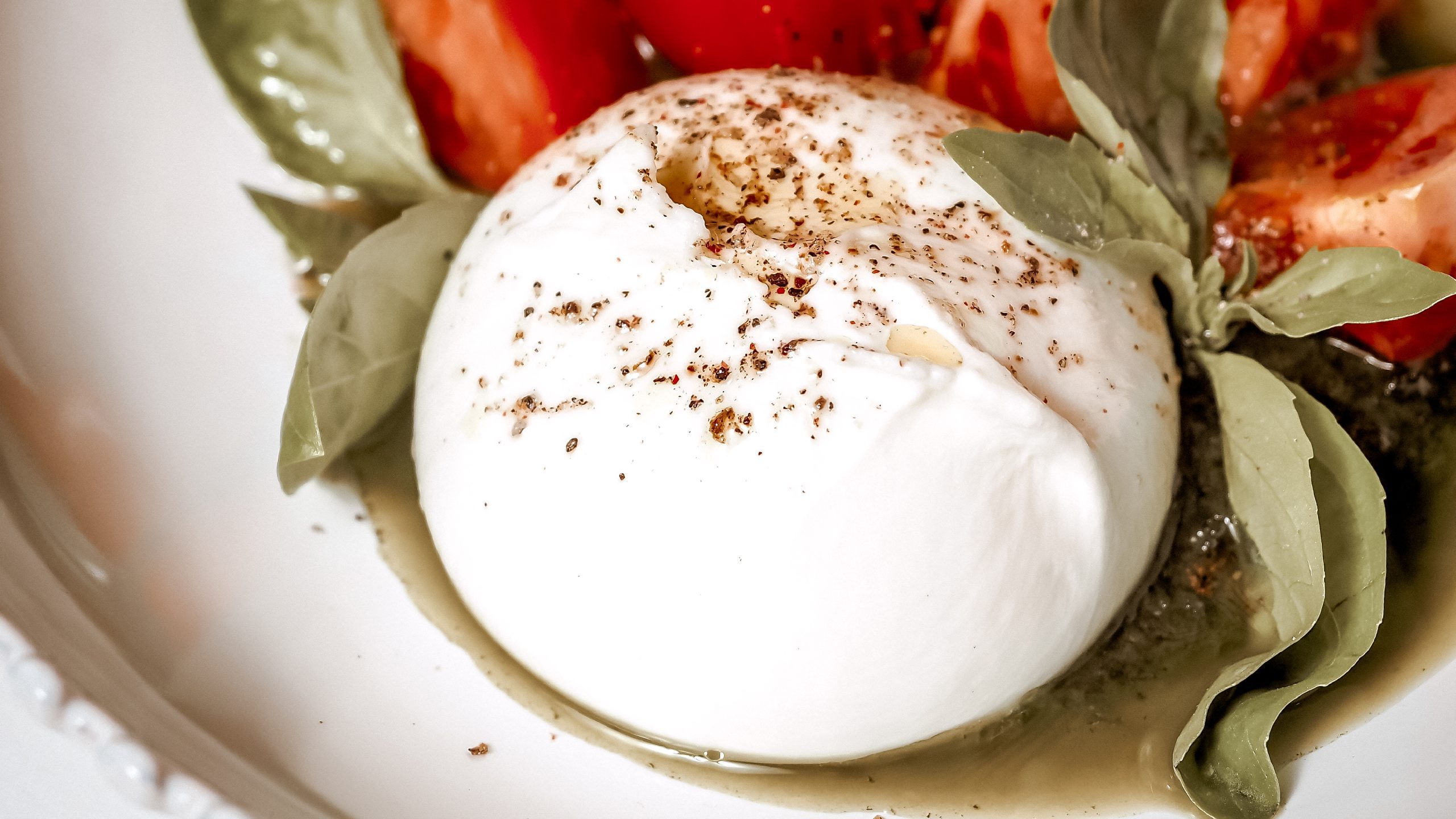Americans love mozzarella cheese. In fact, we eat more than 33 pounds of it on average each year, and back in 2001, mozzarella production even surpassed that of cheddar. We eat it plain, in salads, melted on lasagna and chicken parmigiana, and of course as a pizza topping. The only problem? Americans don't actually eat mozzarella.
Mozzarella is an Italian cheese made from the milk of the water buffalo. In the United States, what we call mozzarella, made from the milk of cows, is better known as fior di latte in Italy. Our love affair with cow's milk mozzarella began more than a century ago with the arrival of Italian immigrants.
A Medieval Cheese

Italians first began producing mozzarella around the 12th century. The Bishop of Capua records a description of a cheese as mozza or povature, in discussing the cheese. The Italian word mozzare, meaning to pinch off, is the method that is used to create the ball of mozzarella.
To make mozzarella, first the curds are heated and then stretched. In Italian, this technique is known as pasta filata. Through the process, curds are stretched and formed into various shapes. Mozzarella and cow's milk fior di latte are pinched off from these warm curds forming the well-known balls. However, provolone, caciocavallo, and scamorza are also produced using the technique.
Production of mozzarella cheese was commercialized by the 14th century. By then, water buffalo were producing a variety of dairy products like butter and ricotta cheese. It remained something of a luxury for the next several centuries, and it wasn't until the 18th century that mozzarella was widely consumed in Italy.
The next major milestone for mozzarella came in the 19th century. In Naples, bakers started making a new kind of flatbread known as pizza. The bread could be topped with a variety of ingredients including crushed tomatoes and slices of mozzarella cheese. When King Umberto I and Margherita of Savoy visited Naples, pizzaiolo Raffaele Esposito served the queen several pies, including one with tomato, basil, and mozzarella cheese. In order to cash in on his good fortune, he named this already popular pizza combination in her honor.
What is Water Buffalo?

Although required for making mozzarella, water buffalo are not native to Italy. They are a relative of the cow, yaks, and aurochs, a now extinct wild ox that roamed Europe through the Renaissance era. Water buffalo arrived in Italy from Asia, but there isn't clear evidence as to who brought the water buffalo to Italy.
Hannibal, who marched elephants over the alps to attack Rome, is one suspect. The water buffalo may have served as beasts of burden carrying his army's supplies. Another way the water buffalo may have arrived is by way of marauding groups originating in Eastern Europe invading the Italian peninsula after the fall of Rome. And finally, another possibility is the Greeks may have brought the buffalo to Sicily as beasts of burden. By the 12th century, bufalare, buffalo farms, were domesticating the animals for milk production.
Water buffalo produce milk with a much higher butterfat content and less water than a dairy cow, making true buffalo milk mozzarella creamy and smooth. The cheese is also bright white. Overall, the product is of higher quality, but the main problem is water buffalo produce only a fraction of the milk that a cow does.
Like so many products from Italy, buffalo mozzarella now has a protected production zone. Mozzarella di Bufala Campana has had PDO protection since 1993 for cheese produced in Apulia, Campania, Lazio, and Molise. It also has geographic protection from the European Union and trademark protection.
One Pinch, Many Cheeses

Mozzarella is a fresh-made cheese. It's soft and spoils easily. The same is true for fior di latte. But in the era before refrigeration, there were a limited number of ways to preserve cheese, and one method was to smoke it. “Mozzarella affumicata” is the result. The smoking process adds flavor to the cheese and turns it into a deep shade of brown on the exterior but helps it last longer than the fresh cheese.
Another way of preserving cheese is to age it. Provolone is made using the pasta filata method, and pinched off like mozzarella, but then aged for a period of time. Provolone in Italy is either dolce, meaning sweet, or piccante, meaning spicy. Provolone dolce is aged for a mere two months with piccante is aged for twelve or more. Artisan provolones will often have a delicate, peppery flavor that is lacking in American, industrial provolone.
Scamorza is a low-moisture variation of mozzarella. The cheese is much more similar to the variety of cow's milk mozzarella used on American pizzas. Americans began producing large quantities of low-moisture mozzarella in the 20th century as pizzerias grew in popularity. With about 45 percent water by volume, low moisture mozzarella is ideal for baking since it releases less moisture when it melts.
A more recent addition to the mozzarella family is burrata. Created in Apulia in the south of Italy, the cheese uses up dairy waste. It was first invented in the 1920s, although the first record of it doesn't come until 1931. The mozzarella is made into a pouch, filled with cream and slices of cheese, and then sealed. Burrata has seen tremendous growth in consumption in recent years. There is now even a consortium pushing to grant the cheese regional projections.
The standard mozzarella ball is made from 250 grams of cheese, but other sizes are known by other terms. A bocconcini is 125 grams, meaning a mouthful. Smaller sizes like 100-gram ovalini (eggs), 15-gram ciligegini (cherry-sized), and 10 grams are per line, meaning beads. The American company BelGioioso produces cow-milk mozzarella in a similar variety of sizes.
Ian MacAllen
Ian MacAllen is America Domani's Senior Correspondent and the author of Red Sauce: How Italian Food Became American. He is a writer, editor, and graphic designer living in Brooklyn. Connect with him at IanMacAllen.com or on Twitter @IanMacAllen.

